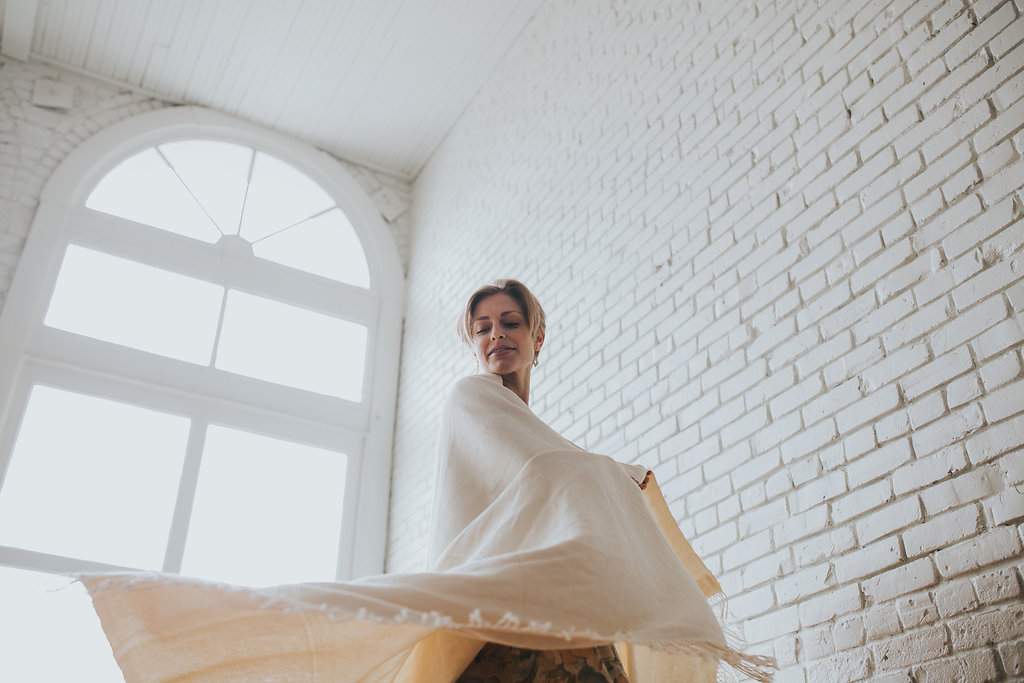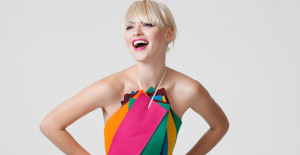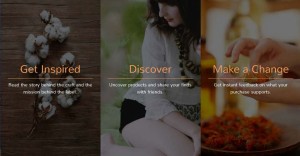This post was kindly sponsored by Mamoq, a ‘clean and conscious’ marketplace.
‘Circular fashion’ is hotter than a detox tea packed with lion’s mane (no, not the Wizard of Oz kind). This is especially true if you’re in tune with the sustainable side of the biz or you’ve been reading my stuff for a while.
If you’re not familiar with the idea, it means designing products in a smarter way so they “copy” earth’s natural and renewable cycle. In nerd lingo, this is called ‘biomimicry.’ Still sound like jibberish? Take Velcro as an example. When savvy inventor Georges de Mestral went galavanting through the woods one afternoon he got the idea after some pesky burs stuck to his shoes. Voila, why re-invent the wheel when nature already has a solution, eh?
[/vc_column_text][vc_column_text]WHY CIRCULARITY IS BETTER THAN ‘THE THREE R’S
Circularity intends to move us toward a fully-regenerative system and away from our current ‘reduce, reuse, recycle’ model, which, counterintuitively — is linear. Don’t let the sly circular green logo fool you!
While well intended, the ‘three-R way’ continues to perpetuate waste. As a product moves through the cycle, it gradually downgrades. So, yes, recycling prolongs a product’s life but, eventually, it’s destined for a landfill. Conversely, a circular product replenishes the earth with ‘biological’ or ‘technical’ nutrients. Designed right, it would be 100% waste-free.
And here’s the best part: with circular products, consumers wouldn’t have to deprive themselves. You know the slogan “buy fewer, better things.” It means well, I promise. But it’s got a guilt-trippy angle that consumers, especially with Americans, are put off by. This is an image issue eco-fashion has to grapple with but, unfortunately, buying less is still the best rule to follow for now. Down the line, circular fashion may allow you to buy something trendy without the pain and shame of environmental guilt. Win-win.
But a big disclaimer: please keeping buying fewer, better things for now. Circular fashion just isn’t’ there yet. Unless you can hit up Elon Musk and convince him to invest. Yes, please do that!
CIRCULAR FASHION
I learned about circularity three years ago when I read Cradle to Cradle. The book was published circa 2002, so the ideas aren’t new, but they’ve started catching on like this season’s incredible shrinking sunglasses.
So why the lag time? For starters, fashion is notoriously late to the game with new technology (I know, strange). But, still, the idea hasn’t exactly caught on in other industries either. It seems in the 16 years since Braungart and McDonough’s published their book, circularity has been more about “idea-hype” and less about implementation. Treehugger explains why.
So, sure, 7.5 percent of major fashion brands have pledged to become more circular. Great! But for now, it’s still the stuff of designers’ dreams. Until the technologies are more accessible, the two best options are still recycling and upcycling.
Here’s the good news: I found a rad new marketplace called Mamoq that curates off-the-radar brands that do both! They have a tight selection of 25 independent designers that adhere to this philosophy:

To me, five of Mamoq’s brands stand out. Today, they are either recycling or upcycling wherever possible and helping to move an imperfect system move toward more circular practices. Because, sustainability y’all, it’s about embracing the contrasts and finding the best way forward on a case-by-case basis.
But first – an important distinction! Do you know the difference between recycled and upcycled? Heck, I couldn’t even put it succinctly before writing this piece. So let’s do a quick refresher, 4th-grade enviro-science style. Make Ms.Frizzle real proud.
THE DIFFERENCE BETWEEN UPCYCLED AND RECYCLED
Recycled (also ‘downcycled’)
When something used is turned into an entirely different product. Example: when you donate your jeans and they get shredded up and made into industrial scrap or insulation. Eventually, they end up in a landfill.
Upcycled
When something used is ‘rescued’ and turned into something more valuable than the original material. Example: a designer uses ‘off-cuts’ from their patternmaking that, otherwise, would have gone to waste, to create a small handbag. Upcycling extends the life by adding an extra phase. Typically, the product is also able to be recycled before it goes to a landfill, extending the life further. And longer life = less demand for new products.

For now, upcycling is the best bet. It prolongs a material’s longevity. More images via Looptworks.
MY MAMOQ PICKS
Mamoq scouted ethical brands with serious aesthetics. Here are my favorites. May Mamoq bless you with mighty fine style!
1. MAYAMIKO
Circular Clap: for being more eco-conscious.
“Mayamiko operates on a Zero Waste commitment, repurposing any cutting room waste into new products. The workshop is run on solar power and they source the majority of their materials within a 20km radius of the ‘Fashion Lab’.”
TELLER
Circular Clap: for spinning vintage to new
“The Kimono collection of Teller is created using vintage, reclaimed fabrics”
RAKHA
Circular Clap: for rad recycling policies
“Based in their North London studio, Rakha battles the fast fashion philosophy by creating timeless pieces using recycled or biodegradable materials.”
KIKS
Circular Clap: for proving upcycled can look innovative (now go hit the streets of LA)
“Established in 2003, KIKS is one of the first brands in Finland to exclusively use upcycled materials for their entire range.”
ELVIS & KRESSE
Circular Clap: for putting out fashion fires
“Elvis and Kresse work backwards. They start with a waste problem and then research and develop products best suited for that material. While UK fire hoses were the first waste material they set out to transform, Elvis and Kresse now work with old parachute silk, leftover leather scraps, coffee sacs and more. So far, they have diverted over 165 tonnes of waste from landfills, entirely eliminating fire hose waste in the UK”
What do you think of circular fashion? Tell me and Mamoq in the comments!
Product Images: Mamoq[/vc_column_text][/vc_column][/vc_row]









